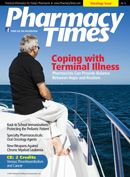Publication
Article
Pharmacy Times
A Closer Look at New FDA Actions: Amgen's Prolia
Author(s):
Amgen Inc's new monoclonal antibody Prolia (denosumab) is the first "biologic therapy" approved by the FDA for the treatment of osteoporosis in menopausal women.
Amgen Inc's new monoclonal antibody Prolia (denosumab) is the first "biologic therapy" approved by the FDA for the treatment of osteoporosis in menopausal women.

The new monoclonal antibody Prolia (denosumab), marketed by Amgen Inc, is the first “biologic therapy” approved by the FDA for the treatment of osteoporosis in postmenopausal women. Osteoporosis—a disease of the bones that causes loss of bone strength—leads to an increased risk of fractures,1 and is most common in women after menopause. The increased risk in postmenopausal women is due to low levels of estrogen, which usually result in weaker bones and an increased likelihood that the bones may break. Approximately 80% of individuals in the United States with osteoporosis are women; 30% of postmenopausal women have osteoporosis, of whom 40% will have some sort of fragility fracture.1
Mechanism of Action/ Pharmacology
Denosumab is a fully human monoclonal antibody that blocks the production of osteoclasts, which decreases bone resorption and increases bone mass. This, in turn, slows down the bone breakdown process. Denosumab has affinity for receptor activator for nuclear factor kappa-B ligands (RANKLs), which are secreted by osteoblasts. RANKLs bind and activate osteoclast precursors, leading to osteolysis and bone resorption. By binding to RANKLs, denosumab prevents the maturation of osteoclasts so that the bone is protected from degradation, and thus from osteoporosis.2,3
Clinical Trials
The role of denosumab in preventing fractures in postmenopausal women with osteoporosis was evaluated in the phase 3, randomized FREEDOM (Fracture Reduction Evaluation of Denosumab in Osteoporosis every 6 Months) trial. This was a 3-year study involving 7808 women aged 60 to 90 years who were randomized to receive either 60 mg of denosumab or placebo.4 Denosumab showed greater reduction over placebo in postmenopausal women at risk for new radiographic vertebral fractures. The incidence of new vertebral fractures at year 3 was 2.3% in the denosumab-treated group versus 7.2% in women receiving placebo (P <.001); hip fractures: 0.7% versus 1.2% (P = .04); and nonvertebral fractures: 6.5% versus 8.0% (P = .01).4 There was no increase in the risk of cancer, infection, cardiovascular disease, delayed fracture healing, or hypocalcemia, and there were no cases of osteonecrosis of the jaw.4 In the STAND (Study of Transitioning from Alendronate to Denosumab) trial, patients who were transitioned to denosumab from alendronate showed increases in bone mineral density at all measured skeletal sites and a greater reduction in bone turnover, with a similar safety profile in both groups.5
Dosing
The dosing of denosumab is a 60-mg subcutaneous injection every 6 months. All patients should receive 1000 mg of calcium along with at least 400 IU of vitamin D daily. Denosumab’s onset of action is within 3 days, which results in roughly an 85% decrease in the markers of bone resorption. It has a time to peak serum concentration that ranges from 3 to 21 days, with a half-life of 25.4 days. The mechanism by which it is metabolized and excreted is currently unknown.2,3
Contraindications, Warnings, and Precautions
Common side effects of denosumab include back pain (34.7%), pain in the extremities (11.7%), musculoskeletal pain (7.6%), hypercholesterolemia (7.2%), and cystitis (5.9%). Hypocalcemia (1.7%) is a more serious side effect that is occasionally seen. The RANKL has a function in the immune system where it is expressed by T-helper cells, so patients taking denosumab have been shown to have a higher risk of serious infections requiring hospitalization (4.0%). Skin reactions such as dermatitis, eczema, and rashes (10.8%), as well as osteonecrosis of the jaw, were also reported. Denosumab is an FDA pregnancy category risk C.2,3
Dr. Agbahiwe is a clinical pharmacist specialist in primary care at the Settegast Health Center in Houston, Texas, and an adjunct faculty member at Texas Southern University College of Pharmacy & Health Sciences. Mr. Luparello is a PharmD candidate at the University of Houston College of Pharmacy. Ms. Young is a PharmD candidate at Texas Southern University College of Pharmacy & Health Sciences.
References:
1. Raisz L. Pathogenesis of osteoporosis: concepts, conflicts, and prospects. J Clin Invest. 2005;115(12):3318-3325.
2. Clinical Pharmacology Web site. Available at: www.clinicalpharmacology.com. Accessed June 18, 2010.
3. Lexi-Comp Web site (Lexi-Drugs TM). Available at: www.lexi-comp.com. Accessed June 18, 2010.
4. Cummings SR, San Martin J, McClung MR, et al. Denosumab for Prevention of Fractures in Postmenopausal Women with Osteoporosis. N Engl J Med. 2009;361:756-765.
5. Kendler DL, Roux C, Benhamou CL, et al. “Effects of Denosumab on Bone Mineral Density and Bone Turnover in Postmenopausal Women Transitioning From Alendronate Therapy.” J Bone Miner Res. 2010; (25) 72-81.
6. McClung MR, Lewiecki EM, Cohen SB, et al. “Denosumab in postmenopausal women with low bone mineral density.” N Engl J Med 2006; 354 (8): 821-31.







